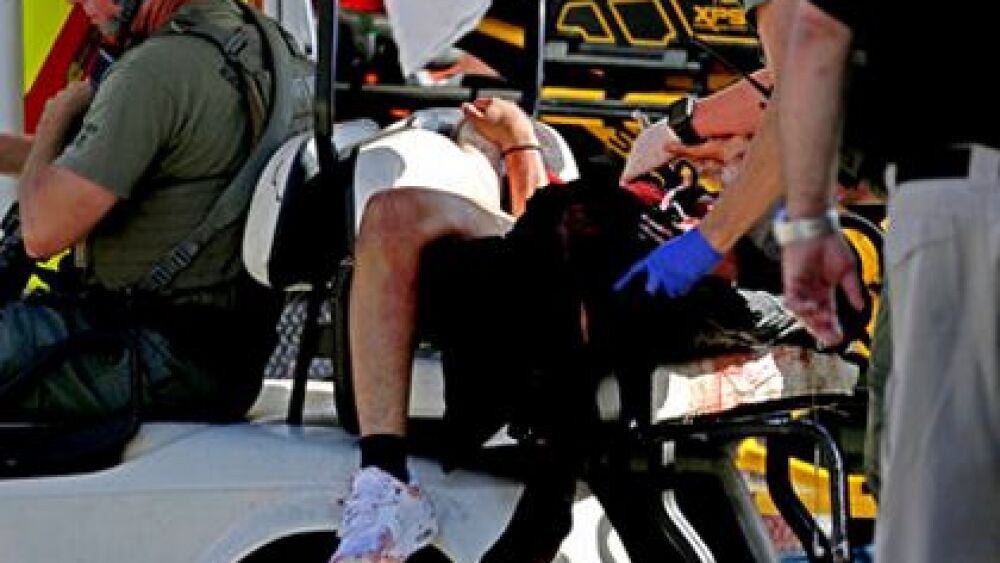What happened: A former student entered Marjory Stoneman Douglas High School, Parkland, Fla., Feb. 14, 2018, near the end of the school day. He wore a gas mask, threw several smoke bombs into a hallway, pulled a fire alarm and then began indiscriminately shooting an AR-15 as students ran through the smoke.
Seventeen people were dead on scene or later died at the hospital and 16 were injured by the time Nikolas Cruz left the school campus. He was arrested a short time later by police.
There is no doubt teachers, students, police officers, firefighters, EMTs and paramedics rushed to the aid of the injured to provide lifesaving care. Those heroic efforts continued at the receiving hospitals and surely saved many lives.
Why it’s significant: The Parkland mass shooting is the most deadly school shooting since the December 2012, mass shooting at Sandy Hook Elementary School in Newtown Conn. Yesterday’s shooting was also more deadly than the 1999 attack at Columbine (Colo.) high school.
Top takeaways on mass shooting response
In the aftermath of Columbine and other mass shootings too numerous to list, the mandate for law enforcement and EMS has been to adopt the Rescue Task Force concept to rapidly respond to stop the killing and stop the dying from severe bleeding. Cops are trained to move towards gun fire to neutralize the shooter, and EMTs and paramedics are expected to enter the warm zone to take over bleeding control started by teachers, children, preachers, moms, dads and friends.
When mass shootings at concerts, churches, nightclubs, malls and schools seem inevitable and unpreventable, we are left with what to do better and faster after the shooting starts.
1. Get to the scene faster to stop the killing
Cops, security officers, firefighters and paramedics who carry a firearm on duty, teachers who carry a firearm in the classroom, and citizens who carry a firearm need to get to the scene faster. Dispatch protocols need to look for opportunities to shave seconds off of the process to get cops on scene while the shooter is still shooting. School districts and taxpayers need to consider increasing in-school police and armed security officers. A smartphone app that notifies of CPR in progress could be modified to alert citizens of a mass shooting in progress and for those citizens to stop the shooting and stop the dying.
2. Move to victims faster to stop the dying
Severe hemorrhage control is a race against the clock. Minutes and seconds matter. Tenths of seconds might matter, as well. Bleeding control supplies – tourniquets and dressings – need to be closer and easier for lay people to access. Trained responders – EMTs and paramedics – need to get to victims faster to triage the most severe patients for rapid transport to definitive care. Politicians and taxpayers have tough choices ahead on how much to spend on bleeding control training and equipment for teachers and body armor for every EMS provider to enter a mass shooting warm zone as soon as possible.
3. Advocate for a change of tactics for active shooter response
The underlying premise of the Rescue Task Force concept for active shooter response – stop the killing, stop the dying – is that we will save more lives by having EMS providers enter the warm zone. Perhaps yesterday’s shooting would have been more deadly following 1999 tactics to stage at the perimeter and wait for victims. It’s impossible to predict the outcome of a counter-factual.
Six of the 10 deadliest mass shootings in modern U.S. history have happened since Newtown. I’d like to hope that the Rescue Task Force concept would be able counter the tactics of mass shooters, but that doesn’t seem to be the case. Most incidents are single shooters who leave the scene or take their own life before police arrive. Other than get their quicker, what are we to do?
Something different needs to happen to reduce the dying from mass shootings; what are you willing to advocate for?
Learn more about mass shooting response
Here are some other articles from FireRescue1 and a learning opportunity from the FireRescue1 Academy on school shooting response, mass casualty incidents and bleeding control.













